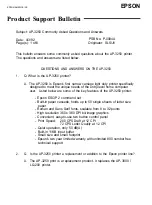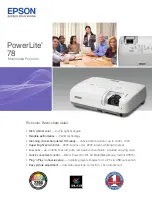
CHAPTER 2 TCP/IP PRINTING
2-9
LAN Server, OS/2 Warp Server
Configuration
Brother Print Servers will work with IBM LAN Server, OS/2 Warp Server networks
that have IBM TCP/IP V2.0 or later installed on the file server (TCP/IP is supplied as
standard with LAN Server V4.0 and later as well as Warp Server). Use the following
procedure to configure the print server on an LAN Server or OS/2 Warp Server file
server, or on an OS/2 Warp Connect workstation:
Server Configuration
Make sure that TCP/IP software is installed on your OS/2 file server. If you have not
already done so, open the TCP/IP folder on the desktop, and double click on the
TCP/IP Configuration icon to add the IP address to the OS/2 file server (consult your
system manager for this address).
Refer to
for information on how to assign an IP address to the printer.
Configuration of an OS/2 Server
1.
From the OS/2 desktop open the Templates folder. Use the right mouse
button to drag the Printer icon (not the Network Printer icon) onto the
desktop.
2.
The Create a Printer window should be open (if it is not, double click on the
printer icon).
3.
Type in any name for the printer.
4.
Select the default printer driver. If the desired printer driver is not listed,
click on the Install new Printer Driver button and add the driver.
5.
Choose the output port. IBM TCP/IP automatically creates 8 named pipes
called \PIPE\LPD0 through to \PIPE\LPD7. Pick an unused port and double
click on it.
Early versions of Warp Server have a bug in which the named pipes do not appear
(the problem does not affect Warp Connect or LAN Server). This problem is fixed
via a patch available from IBM.
You will get the Settings window. Enter the following:
LPD server
The Brother Print Server name (from the HOSTS file) or
its IP address.
LPD printer
For most applications, use the Brother Print Server
'binary' service BINARY_P1. However, if you are
printing text files from the DOS or OS/2 command
prompt, you should use the text service TEXT_P1, which
will add carriage returns for proper formatting of the data
(but will potentially distort graphics printouts).
Host name
The IP name of the OS/2 file server
User
The IP address of the OS/2 file server
















































